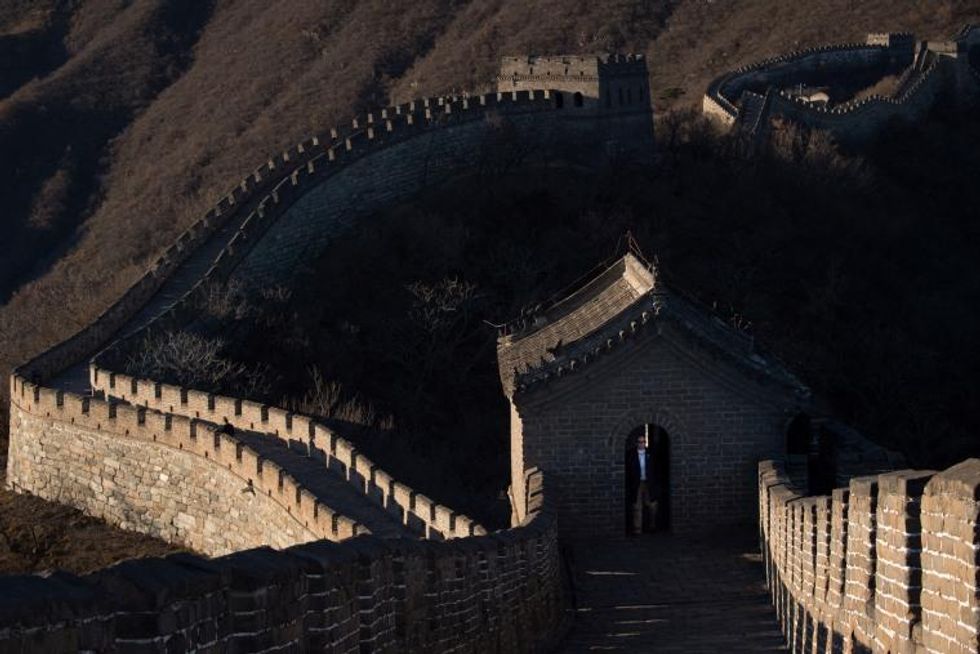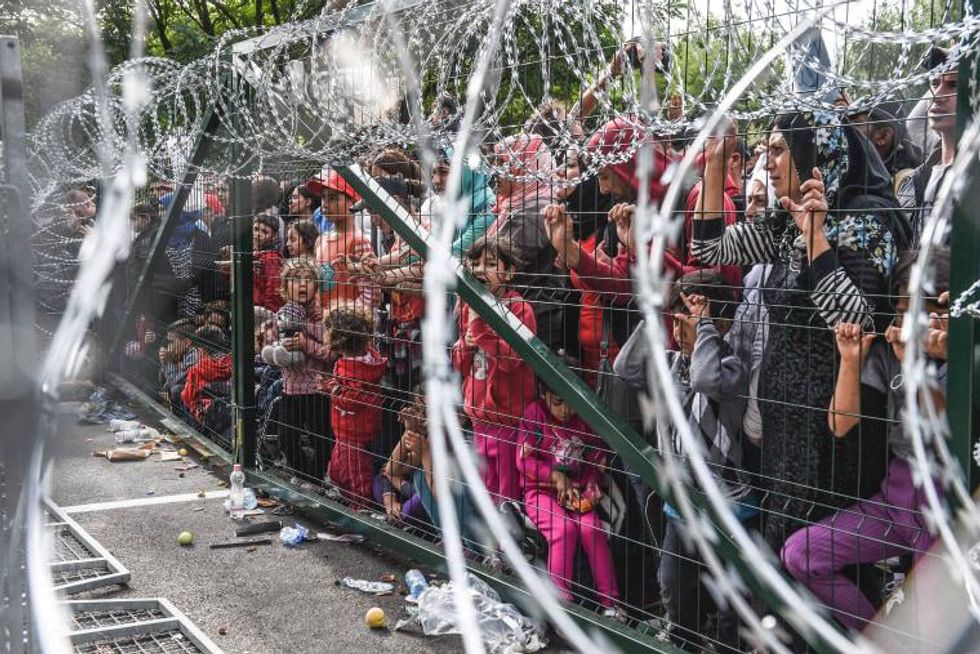Instead of leading the world away from its worst impulses, as America did for most of the 20th century, President Donald Trump's demands for a wall on the U.S. southern border look to be leaning closer to the autocratic acts and optics of tyrannical regimes.
Throughout history, autocratic leaders have relied on walls to control their people. From the fierce tyrant who first began building China's Great Wall in roughly 220 BC to Soviet leader Nikita S. Khrushchev (my great-grandfather as it happens) who ordered construction of the Berlin Wall in 1961, walls have represented undemocratic forces.
This symbolism alone should have given a president pause. Instead, Trump continues his vehement demands -- and insisted on forcing a partial government shutdown once Congress balked.
From the fierce tyrant who first began building China's Great Wall to Soviet leader Nikita S. Khrushchev (my great-grandfather as it happens), walls have represented undemocratic forces.
His opponents, meanwhile, argue that it is practically unnecessary and ideologically demeaning for the U.S. to protect itself in such an outdated manner.
New House Speaker Nancy Pelosi, D-Calif., has called Trump's demands "immoral and unwise." Speaking to CBS News on Sunday, Pelosi pointed out that Trump "would like to not only close government, build a wall, but also abolish Congress so the only voice that mattered was his own." That authoritarian voice indeed.
Trump, with his affinity for branding and ability to connect through tweets and soundbites, has tried to sell the wall as simple, impenetrable and ultimately protective. But as a historical concept, walls often connote fear, closed-mindedness and isolationism.
So which is it? The president has already shown that he is comfortable with problematic and, indeed, unwise illusions. He talks of "America First" -- a slogan favored by American fascists as they sought to keep the United States out of World War II. He regularly labels the media the "enemy of the people" and recently went as far as to brand journalists "crazed lunatics" -- though even despotic Soviets were wary of such characterizations. In the late 1950s, after Joseph Stalin's death, Khrushchev banned the phrase "enemy of the people," when he denounced the dictator's "cult of personality."
But this wall has proved one step beyond Trump's usual boasting. Chinese President Xi Jinping, for example, hardly a model of democratic governance, is now criticizing Trump's desire for the wall, pointedly suggesting that "the wise man builds bridges."
Ironic, since China's Great Wall remains the model, and metaphor, for divisive borders. Emperor Qin Shi Huang, founder of the Qin Dynasty and the first emperor of a unified China, built the immense, self-enclosing structure during his reign 220 to 210 BC. He connected various smaller walls into a powerful defensive border to guard against invasion, protect trade and control immigration.

His wall became, however, a warning to other emperors and empires. Future Chinese rulers continued to expand its battlements, yet they avoided referring to the structure as "the wall." They didn't want to be associated with Qin's reputation as a tyrant.
Centuries later, during World War I, the demarcation between German-occupied Belgium and the Netherlands was an electrified barbed-wire fence. This German construction in the middle of No Man's Land became known as the "wire of death."
Many Belgians died trying to escape into neighboring (and free) Holland. By the middle of the Great War, reportedly 3,000 people had been killed at the electrified wall. These deaths contributed to the region's hatred of Germany -- a sentiment uncommon in Holland and Belgium before the barrier was erected.
Then, of course, there was the Berlin Wall, Khrushchev's effort to separate East Berlin and West Berlin at the height of the Cold War. The wall was designed to prevent East Germans from escaping communism to live under democracy in the West. Countless lives were lost, and, over the decades, the wall became the stark symbol of Soviet oppression.
Public protests finally destroyed the Berlin Wall starting in 1989. This stunning act initiated the fall of communism, and, ultimately, the end of the Soviet Union. It also solidified the negative symbolism of walls as inefficient and inferior ways of protecting nations.
To some extent, this feeling remains today. Hungary's conservative prime minister Viktor Orban sparked an international outcry in 2015 when he instituted a "keep [migrants] out" policy and constructed his own giant wall. Never mind the criticism, Orban's 100-mile long, 13-feet-high razor wire fence separates Hungary from Serbia to this day.

This brings us back to Trump's wall, which he talked about throughout the 2016 presidential campaign, and which was originally supposed to be concrete and paid for by Mexico. His recent proposal suggests the finished barrier could be iron or steel -- and paid for by U.S. taxpayers.
Regardless of the building material, the Democrats in Congress are refusing to fund it.
Around the globe many see this fight as a defense of American democracy. The White House, Trump's critics insist, should not be allowed to dismantle the U.S. principles of inclusion, not exclusion. They ask why Republicans are not doing their job and providing checks-and-balances to Trump's worrying autocratic tendencies.
The good news is that some House and Senate Republicans have begun to express disagreement with the president and the GOP leaders about the government shutdown.
They should be moving faster, however. As a former citizen of the Soviet Union, which used walls to lower the quality of life of its citizens, I fear that the longer Trump's party allows him to act with impunity, the harder it could be to restore America to normalcy after he is gone.



